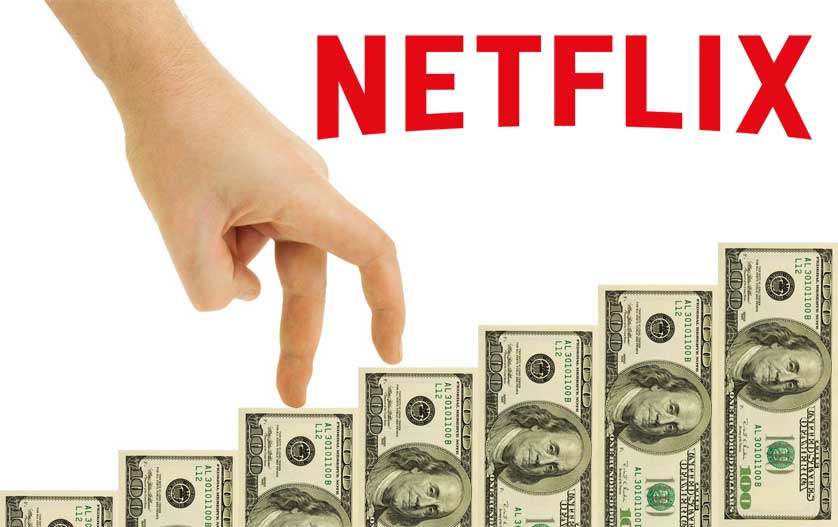A New Pricing Strategy for Netflix
Netflix has witnessed huge third-quarter earnings. This is partly realized by the success of the new pricing strategy of Netflix. Over the last years, Netflix has adopted the ‘bundling strategy’. The company has bundled its product with multiple hardware devices. Also, last year started bundling their service with other service providers like T-Mobile (Niu, 2018).
The bundling strategy is effective because the products which Netflix is bundling with, work together. Besides that, Netflix would have zero incremental costs, but will benefit of the additional sales. Lastly, the switching costs of leaving Netflix will increase when the company is bundled with another product.
A positive thing about bundling is the additional pattern of the cognitive bias ‘relativity’ (Lecture 3, Li, T). Companies can increase their sales because people really don’t know what they want until they see the context. If two bundled products are offered, the customer notices the advantage of buying both products together. Because of the fact that Netflix is an unlimited service, it is happy to receive any extra sales.
I my opinion, Netflix is executing a great strategy by bundling. However, Netflix might earn additional revenue by implementing a versioning pricing strategy. This is a second-degree of price discrimination and is about offering a product line and watch the choices of consumers. Netflix could offer different version of their services by providing different prices for a different amount of available movies and series. The segmentation is than based on self-selection and on willingness to pay for different versions. Additional revenue could be achieved by this.
So, Netflix should in additional to their bundling strategy, also focus on a versioning pricing strategy. By combining both, the company could achieve both extra sales and an increase in revenue.
https://www.fool.com/investing/2018/10/17/bundling-continues-to-boost-netflixs-subscriber-gr.aspx
Lecture 3, Information Strategy, Li, T.


Your viewpoint is quite interesting Jaron. Netflix I believe is using a versioning pricing strategy on another dimension of the product offering already, although less content related more to the number of users or geographical location. Your alternative pricing strategy is although seems to be more segmented, could potentially eliminate the whole point of why I am using Netflix. I have a subscription to enjoy a wide range of different content. This is the whole point of the service offered that they do offer the long tail and I do not have to purchase multiple bundles in order to have access to niche offerings. I do believe a lot of revenue lies in your alternative strategy, however it would be a very risky if not executed properly. They would have to bundle content in a way that it is still beneficial for me to purchase several bundles, otherwise they do not collect extra profit (due to the low marginal cost of reproduction.) Thank you for sharing, it really made me think of the value of streaming services.
First of all, I like how you relate the example to the theory. Your reasoning is understandable, however, I think that versioning in the way you describe it in this scenario is not really applicable.
First, how would you decide what versions to offer? In my opinion the demand of consumer to different and widespread when in comes to movies series, which would either result in too many versions or versions which are not appealing to costumers.
Second, the monthly subscription fee for Netflix is already pretty low, therefore I personally think that such a pricing strategy wouldn’t convince people who are currently not using Netflix to use it.
An idea from my side would be a strategy in which they take Spotify as kind of a role model. Netflix could make use of versioning in the sense that they offer their service with a limited amount of movies/series and show advertisements from time to time.
I agree with the first part of your story, but not with your last. Netflix already uses a versioning pricing strategy, where users are able to choose the amount of devices that able to simultaneously stream content from Netflix, and the image quality in which this can be done. This works, because people that are able to spend more, will more likely do so, so that they can see content in the highest image quality, and do so on multiple devices. In my opinion, your solution will more likely cause confusion and people abandoning the service instead. People will want to be able to see all content, and if that prescription is too expensive, they might decide to switch to HBO or other similar services instead.
Hi Jaron,
First of all, a very interest blog post about the pricing strategy of Netflix. I definitely like your suggestion for a new versioning pricing strategy for Netflix.
When I am looking for a movie of TV series I want to watch, I notice that more than 80% of the content availability doesn’t interest me at al (e.g. children content, stand-up comedian stuff) and chances are close to zero that I will ever watch this. Furthermore, the content that I use to watch on Netflix tends to be a limited amount of genres. This makes me some times think to stop my subscription to Netflix.
If Netflix would offer me a product-line that contains content within the genres I like for a reduced price, it would be very interesting to me and also other potential customers. For example, when parents of children wants a children-content only Netflix subscription, they now need to subscribe to Netflix for the full €7,99 and make a “children-friendly” user on their account. This could result into lost sales. To fix this, Netflix could offer this children-content only package for a reduced price (e.g. €2,99) and boost their revenue.
Best,
Aaron van der Steen